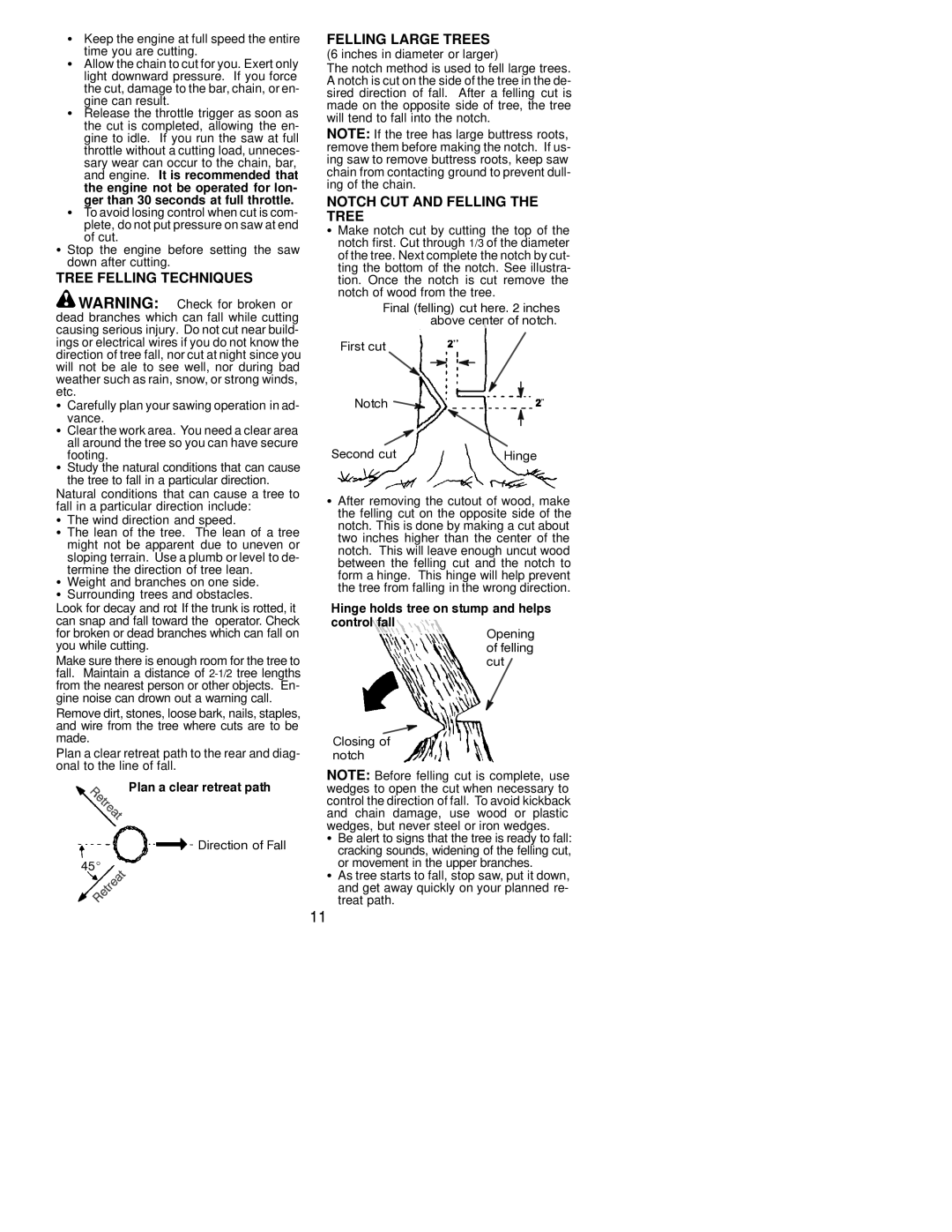220 LE, 260 LE specifications
The Poulan 220 LE and 260 LE are two powerful chainsaws designed for both professional landscapers and DIY enthusiasts. These models are known for their reliability, efficiency, and ease of use, making them popular choices for various cutting tasks.The Poulan 220 LE is powered by a robust 20cc engine, providing ample power for light to medium cutting tasks. Its lightweight build enhances maneuverability, allowing users to operate it for extended periods without fatigue. The chainsaw features a 10-inch bar, ideal for trimming branches, pruning, and handling smaller trees, making it a suitable choice for homeowners and gardeners. One of the standout features of the 220 LE is its tool-less chain tensioning system, allowing users to make quick adjustments to the chain without the need for additional tools. This ensures safety and convenience, as maintaining optimal chain tension is vital for performance and safety.
Conversely, the Poulan 260 LE offers a more powerful option with its 26cc engine. This model is designed for heavier cutting tasks, making it suitable for those who require a more robust tool for larger projects. The 16-inch bar allows for cutting through thicker logs and branches with ease. The 260 LE is equipped with the same user-friendly tool-less chain tensioning system, ensuring that users can maintain their chainsaw quickly and efficiently.
Both models incorporate advanced technologies to enhance performance and user experience. The Easy Start system reduces the effort needed to start the engine, allowing for quicker and smoother operation. Additionally, the anti-vibration design minimizes operator fatigue, providing a more comfortable cutting experience.
Both models are built with durability in mind, featuring high-quality components that withstand heavy use. Their air filter systems help maintain engine performance by keeping out dirt and debris, which is crucial for longevity.
In summary, the Poulan 220 LE and 260 LE chainsaws blend power, ease of use, and comfort in a compact design. Whether for occasional yard work or more extensive landscaping projects, these models stand out as reliable tools that meet a variety of cutting needs. Their advanced technologies and user-friendly features make them excellent choices for anyone looking to effectively tackle their cutting tasks.

